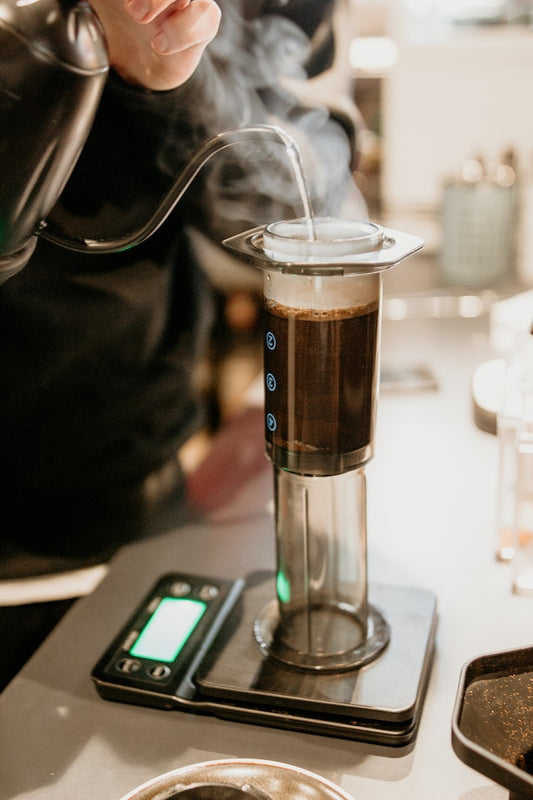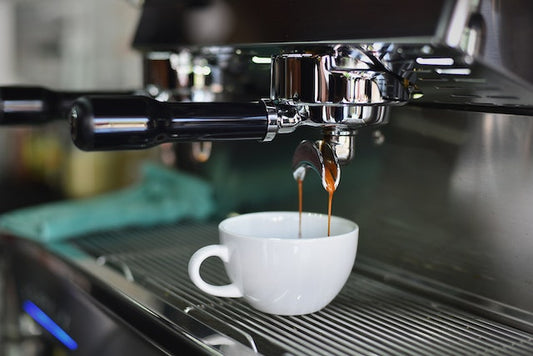Are you tired of mediocre cups of coffee that just don't hit the spot? Are you searching for that perfect jolt of caffeine that excites your taste buds and leaves you craving for more? Look no further, because we're here to unveil the secrets behind the art of making the perfect espresso.
Espresso, with its rich and intense flavor, has become a beloved beverage for coffee enthusiasts around the world. It's not just about brewing a quick shot of caffeine; it's about mastering the art of crafting a velvety, aromatic, and perfectly balanced espresso.
In this blog post, we'll take you on a journey into the world of espresso. We'll explore the origins of this beloved beverage and delve into the basics that every aspiring espresso connoisseur should know. From understanding the different types of beans and how to store them properly, to preparing your espresso machine and grinding the beans to perfection, we'll cover all the essential steps in achieving that elusive, perfect shot.

Understanding Espresso: A Basic Overview
Espresso, derived from the Italian word meaning "pressed out," is a concentrated form of coffee that has gained immense popularity worldwide. Known for its intense flavor and rich aroma, espresso is a staple in many coffee shops and households. In this section, we will provide you with a basic overview of espresso, including its origins, characteristics, and the key elements that distinguish it from regular brewed coffee.

Origins of Espresso
The birthplace of espresso can be traced back to Italy in the late 19th century. It was Luigi Bezzera, an Italian inventor, who first patented a machine capable of producing a concentrated coffee beverage quickly. This invention revolutionized the way coffee was prepared and laid the foundation for the modern espresso we know today.

Espresso vs. Regular Coffee
While espresso and regular brewed coffee both come from the same source – coffee beans – there are significant differences in their preparation methods and flavor profiles.
Firstly, espresso is brewed using a specialized espresso machine that forces hot water through finely ground coffee beans under high pressure. This results in a concentrated shot of coffee that is typically served in small, demitasse-sized cups.
On the other hand, regular brewed coffee is made by steeping coarser coffee grounds in hot water for a longer period. This method allows for a slower extraction process, resulting in a larger volume of coffee with a milder taste.
Additionally, the brewing time for espresso is much shorter compared to regular coffee. While a typical espresso shot takes around 20-30 seconds to brew, regular coffee may require several minutes of brewing time.

The Espresso Shot
The centerpiece of any espresso experience is the espresso shot itself. This small, concentrated portion of coffee is the foundation for a wide range of espresso-based drinks and serves as a measure of the barista's skill.
An espresso shot is typically extracted using a portafilter, which holds the finely ground coffee. The water is forced through the coffee grounds under high pressure, extracting the flavors and oils to create the rich and intense espresso.
A well-pulled espresso shot should have a balanced taste, featuring a harmonious blend of acidity, sweetness, and bitterness. The crema should be thick, velvety, and golden-brown in color, indicating a successful extraction.
Your espresso shot deserves more than a solo act. Check out our awesome espresso recipes at The Bean Lab!

How to Choose the Right Espresso Beans
Choosing the right espresso beans is a critical step in the pursuit of making the perfect espresso. The quality and characteristics of the beans directly impact the taste and flavor of the final cup. In this section, we will explore the importance of bean quality, discuss different types of espresso beans, and provide guidance on how to properly store them for optimal freshness. Read here for a more comprehensive guide for choosing the best coffee beans in your cup of joe!

The Importance of Bean Quality
When it comes to espresso, the quality of the beans cannot be overstated. High-quality beans ensure a more flavorful and enjoyable cup of espresso. Here are some factors to consider when assessing bean quality:
- Origin: Different regions around the world produce coffee beans with distinct flavor profiles. For example, beans from Central America may offer fruity and citrusy notes, while those from Africa can exhibit a more floral or wine-like character. Understanding the origin of the beans can help you choose flavors that align with your preferences.
- Roast Level: The roast level of the beans plays a significant role in the flavor profile of the espresso. Lighter roasts tend to preserve the natural characteristics of the beans, resulting in brighter and more nuanced flavors. Darker roasts, on the other hand, bring out bolder and more intense flavors with hints of chocolate or caramel. Consider experimenting with different roast levels to find your preferred taste.
- Freshness: Freshly roasted beans are essential for achieving the best espresso flavor. Look for beans that have been recently roasted and check for the roast date on the packaging. Avoid purchasing beans that have been sitting on the shelf for an extended period, as they may have lost some of their freshness and flavor.
Different Types of Espresso Beans
Espresso beans come in various types, each offering unique flavor profiles and characteristics. Here are some common types of espresso beans to consider:
- Arabica: Arabica beans are known for their delicate and nuanced flavors. They often have a smoother, sweeter taste with hints of fruit, berries, or floral notes. Arabica beans are generally considered to be of higher quality and are preferred by many espresso enthusiasts.
- Robusta: Robusta beans are more robust and bitter compared to Arabica beans. They have a higher caffeine content and a stronger, earthier flavor profile. Robusta beans are often used in blends to add body and create a richer crema.
- Blends: Many espresso beans on the market are blends, combining different varieties to achieve a desired flavor profile. Blends can offer a balanced and complex taste, combining the best qualities of various beans. Experimenting with different blends can be an exciting way to discover your preferred espresso flavors. Check these signature blends of The Bean Lab!

How to Brew Espresso
Brewing espresso is a precise and intricate process that requires attention to detail and a good understanding of the equipment involved. In this section, we will guide you through the essential steps of brewing espresso, including understanding espresso machines, the brewing process itself, and tips for perfecting the crema.
The Brewing Process
Now that we have a basic understanding of the espresso machine, let's dive into the brewing process itself. Here are the essential steps to follow:
- Preparation: Start by preheating your espresso machine and portafilter. This helps maintain the proper temperature throughout the brewing process. Also, ensure that your espresso cups are preheated to keep the brewed espresso hot.
- Grinding and Dosing: Grind your coffee beans to the desired fineness, as discussed in the previous section. Dose the appropriate amount of coffee into the portafilter, distribute it evenly, and tamp it down firmly.
- Inserting the Portafilter: Attach the portafilter to the group head of the espresso machine. Make sure it is securely locked in place.
- Extraction: Start the extraction process by activating the machine. The hot water will be forced through the coffee grounds at high pressure, extracting the flavors and oils. Aim for a total extraction time of around 25-30 seconds.
- Monitoring the Shot: Throughout the extraction, observe the flow rate of the espresso. It should start with a slow drip, gradually increasing to a steady and consistent flow. Adjust the grind size if the extraction is too slow or too fast.
- Collecting the Shot: Once the extraction is complete, the espresso will start flowing into your preheated cup. Stop the extraction when you have reached the desired volume.

Perfecting the Crema
The crema, that velvety layer of foam on top of a well-pulled espresso shot, is not only visually appealing but also contributes to the overall taste and mouthfeel. Here are some tips to help you achieve a beautiful crema:
- Fresh Beans: As discussed earlier, using freshly roasted and properly stored beans is crucial for a rich and vibrant crema. Beans that have lost their freshness may result in a thin or lackluster crema.
- Proper Extraction: The crema is formed during the extraction process when carbon dioxide is released from the coffee grounds. Ensuring a consistent and balanced extraction will help create a thick and creamy crema.
- Grind Size and Tamping: The right grind size and proper tamping techniques are essential to achieve an even and uniform extraction, which contributes to a good crema. Experiment with different grind sizes and tamping pressures to find the sweet spot.
- Water Quality: The quality of the water used for brewing espresso can also impact the crema. Ideally, use filtered or bottled water to avoid any impurities that might affect the flavor and appearance of the crema.
By understanding the components of an espresso machine, following the brewing process, and implementing techniques to perfect the crema, you are well on your way to brewing a delicious and satisfying espresso.

Congratulations on completing this comprehensive guide to the art of making the perfect espresso. Armed with the knowledge of understanding espresso, choosing the right beans, preparing your equipment, crafting the shot, and exploring advanced techniques, you are well on your way to becoming a true espresso aficionado. Now it's time to put your skills into practice and enjoy the delightful world of espresso creations. Cheers!
P.S. Having difficulty in choosing the right coffee origin near you? Check this out!




